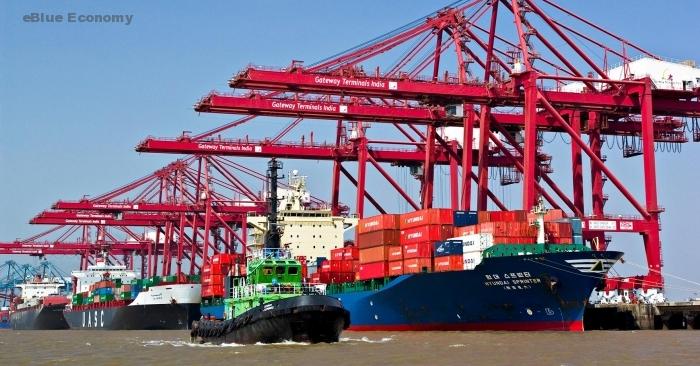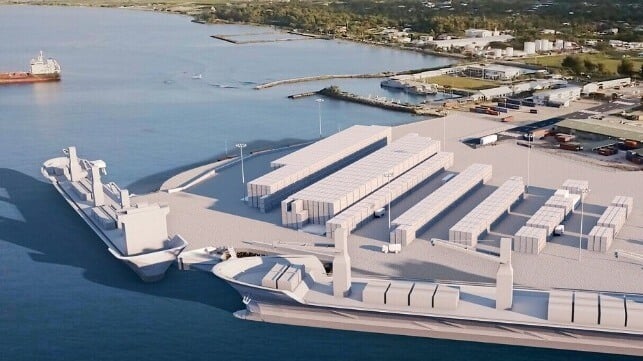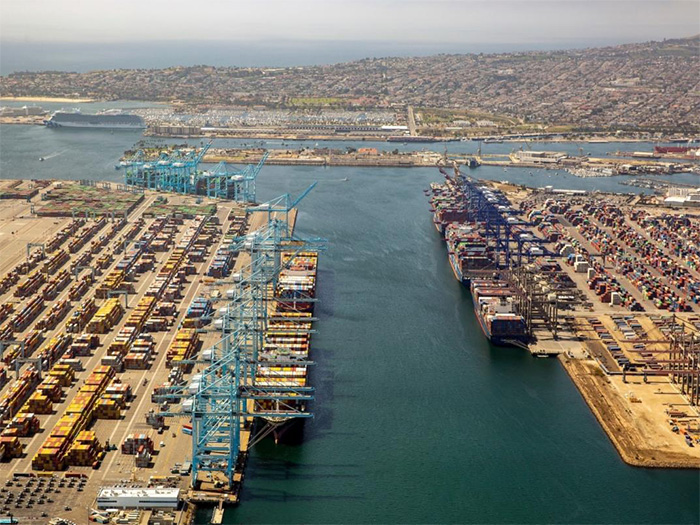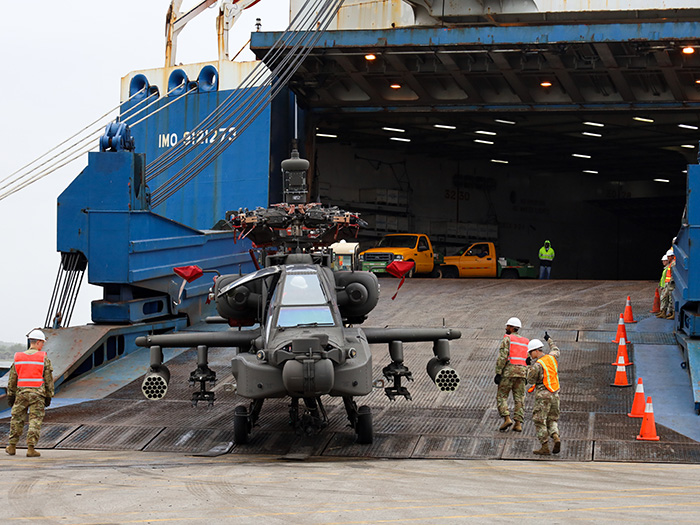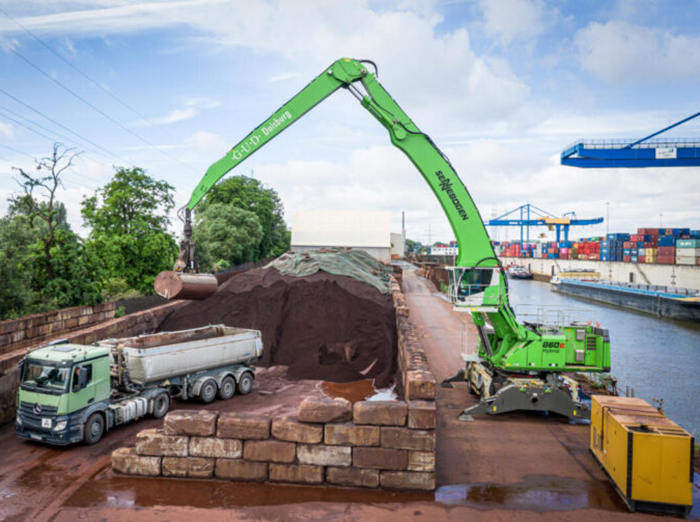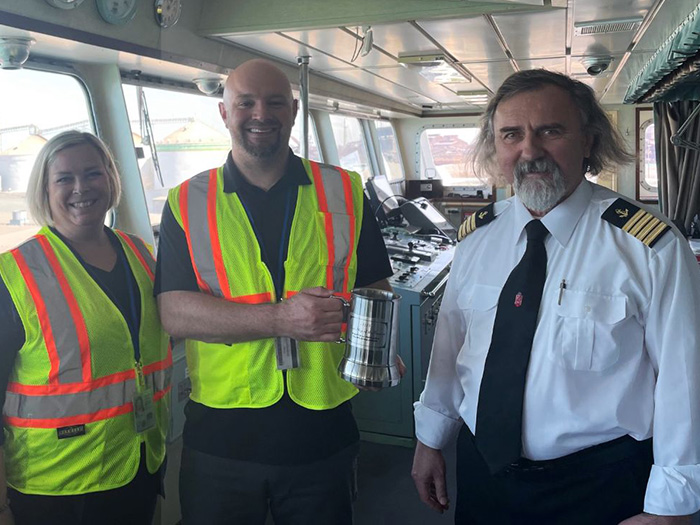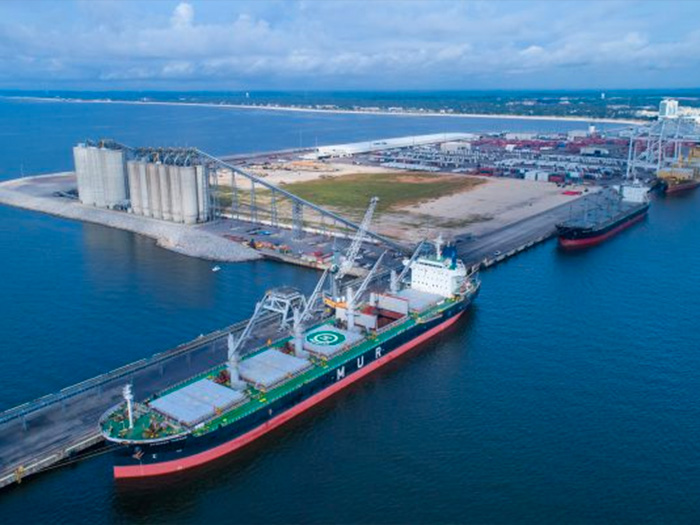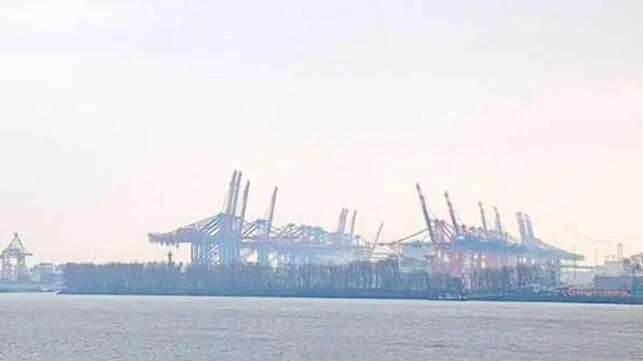Across India’s ports industry, digital transformation measures are showing results – speeding up import/export processes, reducing bottlenecks, increasing security and improving the nation’s ‘Ease of Doing Business’ (EoDB) performance throughout the supply chain
 As the responsible agency for the country’s ports, the Indian Ports Association (IPA), an apex body of major ports under the administrative control of the Ministry of Ports, Shipping and Waterways (MoPSW), Government of India, is leading the effort. As IPA Executive Director Dr Abhijit Singh says: “Ports are the gateway to prosperity for the country. Adoption of next-generation technology is critical to revamp the maritime industry – to enhance user experience and make it more efficient and safer.”
As the responsible agency for the country’s ports, the Indian Ports Association (IPA), an apex body of major ports under the administrative control of the Ministry of Ports, Shipping and Waterways (MoPSW), Government of India, is leading the effort. As IPA Executive Director Dr Abhijit Singh says: “Ports are the gateway to prosperity for the country. Adoption of next-generation technology is critical to revamp the maritime industry – to enhance user experience and make it more efficient and safer.”
IPA, an active member of IPCSA, acts as a ‘think-tank’ for MoPSW and is recognised as a centre of excellence, helping ports achieve excellence in their operations and management. The sector needs some ‘out of the box’ ideas, says Abhijit.
“India has been working on its digital infrastructure and enabling of e-governance for many years and digitalisation is gathering pace across all industries,” he says. “The arrival of technologies such as the Internet of Things, AI and big data, blockchain, etc., have made it possible to collect and process larger and larger volumes of information at increasingly lower costs. Ports have embarked on this journey with an objective to improve port performance, bring efficiencies and increase productivity.”
IPA’s main agenda is to achieve greater operational efficiency, he explains. “We see this through the lens of the performance metrics of ports, employee empowerment, less waiting time, better customer experience and reduced logistics costs. As this involves extensive change management, it cannot happen overnight. Hence, we are doing it in a phased manner, so that change happens in the desired direction.”
Already, a number of digital transformation measures have been successfully introduced across India’s major ports, including Direct Port Delivery, Direct Port Entry, development of the Port Community System, the installation of container scanners and RFID systems, and eliminating paper forms.
 Central to the effort, IPA has established a centralised, uniform, web-based Port Community System in order to move towards a paperless system. The PCS covers all the major ports and, in line with IPA’s collective, collaborative and cooperative approach to EDI implementation, and for the benefit of all stakeholders in the Indian ports industry, it covers non-major ports too.
Central to the effort, IPA has established a centralised, uniform, web-based Port Community System in order to move towards a paperless system. The PCS covers all the major ports and, in line with IPA’s collective, collaborative and cooperative approach to EDI implementation, and for the benefit of all stakeholders in the Indian ports industry, it covers non-major ports too.
In December 2018, an upgraded version – PCS1x – was launched as an open platform. It is evolving into a National Logistics Portal (NLP-Marine), a secure, neutral and open electronic/Internet-based platform for all stakeholders in maritime trade and Indian seaport communities. “It will optimise, manage and automate logistics-efficient processes through a single submission of data, linking the entire maritime transport and logistics chain and enabling real-time information exchange and business transactions,” says Abhijit.
Other developments include implementation of an Enterprise Business System (EBS) at five major ports – Mumbai, Chennai, Deendayal, Paradip and Kolkata (including Haldia), at a project cost of approximately 320 crores. The EBS work is staggering; a total of 2,474 different processes from the five ports have been rationalised, harmonised, optimised and standardised to produce a streamlined 162 processes. The performance of each department and process will be tracked against defined Key Performance Indicators (KPI) for each department and process. A key aim has been to provide a digital port ecosystem adopting international practices, but without losing alignment with local needs.
“The proposed EBS will comprise three core solution components – Port Operations Solution, standard ERP solutions and auxiliary solutions, and will tightly integrate with PCS and other retained applications of ports,” says Abhijit. “This will completely digitalise most processes at ports, improving their role as trade facilitator. There has been a ‘soft launch’ of the EBS at Chennai Port and the project is in progress at the remaining ports.”
 IPA has also overseen the introduction of RFID-based gate automation systems, to enhance security, remove bottlenecks for seamless movement of traffic through port gates, provide tracking and tracing of people, materials, vehicles, equipment and other assets, and ensure accurate and timely collection of revenue. Alongside this, another RFID solution is being handled by Delhi Mumbai Industrial Corridor Development Corporation (DMICDC) for tracking and tracing movement of export/import containers in the major ports.
IPA has also overseen the introduction of RFID-based gate automation systems, to enhance security, remove bottlenecks for seamless movement of traffic through port gates, provide tracking and tracing of people, materials, vehicles, equipment and other assets, and ensure accurate and timely collection of revenue. Alongside this, another RFID solution is being handled by Delhi Mumbai Industrial Corridor Development Corporation (DMICDC) for tracking and tracing movement of export/import containers in the major ports.
“Implementation of such digital technologies is bridging the gap between operators and customers and is actively improving the user’s experience,” says Abhijit. “Real time cargo tracking, where customers can find out the status of their cargo any time, is leading to a frictionless and hassle-free experience. Technologies such as MoorMaster, DUKC (e-navigation), etc., are supporting the safe, swift and efficient handling of vessels. Other technology modules such as automatic berth allocation, plot/yard planning, and linking rail booking with port systems, which form part of the state-of-the-art Terminal Operating Systems, are also helping ports to deliver operational efficiencies.
All of this work is delivering real results and playing an important part in India’s overall performance as a business and trading nation.
In 2015, India was ranked 142 in the World Bank’s EoDB rankings. Four years later, in 2019, India had shot up to 77 – and in 2020, it rose again, to rank 63.

“The MoPSW has a huge role to play in improving the country’s ‘Trading Across Border’ ranking, thus impacting the overall EoDB ranking,” says Abhijit.
India is currently ranked 68 on the Trading Across Borders Indicator, which measures the time and cost (excluding tariffs) of the logistics process for exporting and importing goods, taking into account documentary compliance, border compliance and domestic transport.
“The modernisation and digital transformation of major ports, along with initiatives such as Direct Port Delivery and Direct Port Entry, have helped in reducing time and cost in EXIM trade and improving Ease of Doing Business. Our aim is to bring India into the top ten countries on the Trading Across Border Indicator in the next four to five years,” says Abhijit.
There is obviously much more to come. As he says, digitalisation is pushing the maritime industry beyond its traditional limits and providing many opportunities to enhance the productivity, efficiency and sustainability of logistics.
“A wave of technological innovation and integration is pushing ports and shipping companies to transform themselves and become more data- and insight-driven. Smart Ports are transforming their model to take advantage of their position in the supply chain and to add value through better use of the data generated by the embedded IoT infrastructure.
“As the technologies and ports evolve, IoT, Cloud Computing, Big Data and GIS will have significant implications for port operations. The amount of automation will increase and dependence on human intervention for taking repetitive decision might decrease.”
 He gives some examples of the way in which such technologies can shape the future for Indian ports.
He gives some examples of the way in which such technologies can shape the future for Indian ports.
IoT and Big Data analytics-based technologies such as crane sensors can help to increase the productivity of cranes by reducing downtime and ensuring timely maintenance.
GIS can help with real-time updating of plot/yard occupancy status and minimise the time spent in completing manual checks and processes during allocation:
‣ Asset health monitoring and predictive maintenance. Similarly, capex projects monitoring and progress management for infrastructure management can dramatically reduce capex and maintenance costs.


‣ Tools such as vessel arrival prediction, vehicle booking systems and hinterland truck marketplace can significantly help in streamlining port operations, increasing transparency and ultimately improving the ease of doing business while increasing port efficiency.
‣ Technologies such as Hyperloop, 3D printing of spare parts for vessel repairs and Automated Guided Vehicles are being piloted internationally; they may well become mainstream and relevant for the Indian context in time to come.
press release
Indian ports are in a healthy state – and IPA is committed to setting ever high standards for them, says Abhijit. “Further expansion, modernisation, diversification and digitalisation are the keywords for the future development of our ports.


